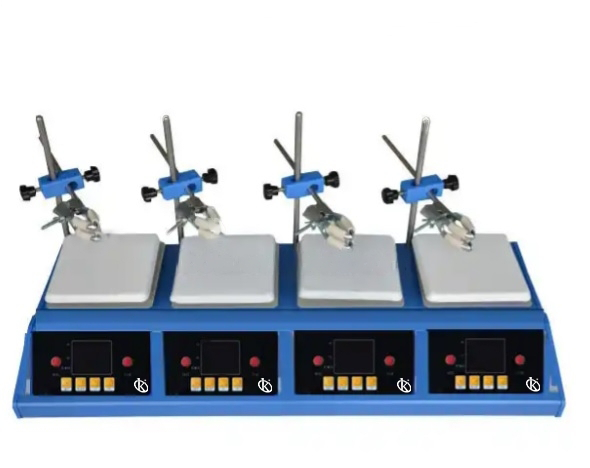A hot plate is a flat, smooth surface that is in contact with a heat source. They can be used to keep objects warm or cool them. Most are made of metal, although you can also find them made of glass or ceramics.
A hot plate or, as they are sometimes known, a hot surface, is a metal or other material plate that can be heated to a controlled temperature. They are used in a variety of applications, including heating liquids and solids, cooking, welding and product manufacturing. In the laboratory, hot plates are used for a variety of purposes, including heating reagents and mixtures, evaporating liquids, and drying products.
Important Points
There are different types of plates, but the most common are table plates, laboratory plates, and portable plates. However, care should be taken when using a hot plate, as it can be dangerous if not used properly. Therefore, before use, it is important to read the manufacturer’s instructions. It should also be checked if it is clean and free of dust. If these steps are not followed, you may run the risk of the plaque spilling and causing burns.
Another important aspect to keep in mind is the size. Choose one that is large enough for the object to be heated or cooled. If the plate is too small, the object may spill or fall out. If the needle is too large, it can be difficult to manipulate.
Once the appropriate size has been selected, the heat source should be turned off. It must then be applied to the surface of the object. Make sure it is at an appropriate temperature before heating the object. If it is too hot, the object can be melted.
After application, wait a few minutes for it to cool. It can then be removed. In general, use is recommended as long as precautions are taken. However, it is important to follow the manufacturer’s instructions to avoid further damage.
Fundamental Structure
Hot plates are made from a wide variety of materials, including stainless steel, ceramic and glass. The most common materials are stainless steel and ceramics. Stainless steel is a durable material that can be cleaned easily and has good thermal conductivity. Ceramic is often the hot plate of choice for applications requiring a higher temperature, as it can withstand higher temperatures than stainless steel. In addition, ceramic is often easier to clean than stainless steel.
They can be used with a variety of equipment and accessories. The most common equipment includes heat pumps, flasks, jars, and precipitation vessels. The most common accessories include lids, stoppers, stirrers and spoons. Hot plates can be used with a wide variety of reagents and materials. Common reagents include acids, bases, salts, and solvents. The most common materials include tissue, cell, microorganism, and crystal samples.
In the laboratory, care should be taken when using hot plates. A hot plate suitable for the size and shape of the sample should be used. In addition, one with the appropriate temperature control for the application should be used. It must be kept clean and in good working order.
Kalstein brand heating plate
At Kalstein we are manufacturers of laboratory equipment and have a wide range at the best prices. We offer the heating plate corresponding to the YR series, equipped with PT100 thermocouple sensor/probe type, with inner and outer thermocouple. Stirring speed of 100-1800 RPM Digital Shake Screen. They do not require lubricants that may contaminate the reaction vessel and the product. For our catalog, HERE Before making your purchase, you will be advised by our experts to make your experience excellent. For more information, visit our website HERE

